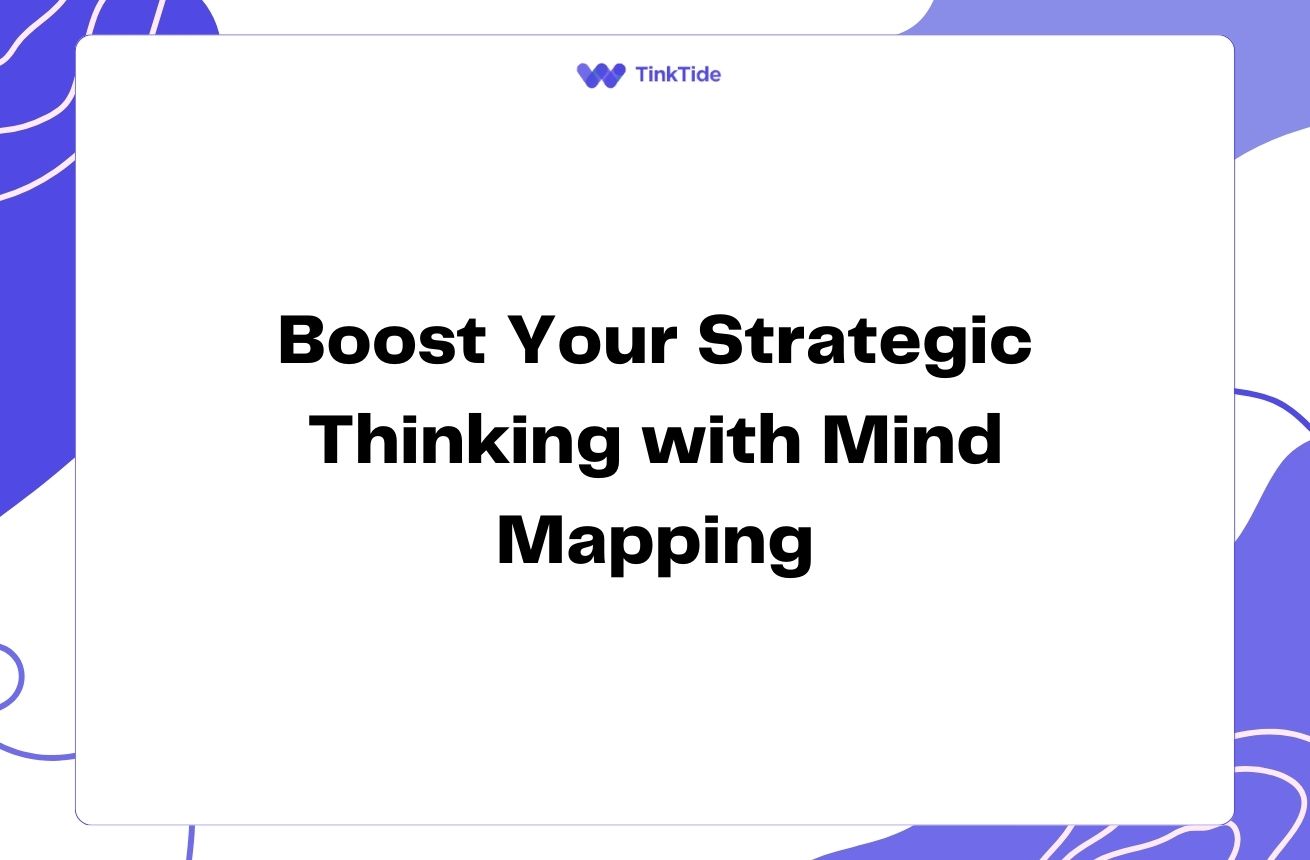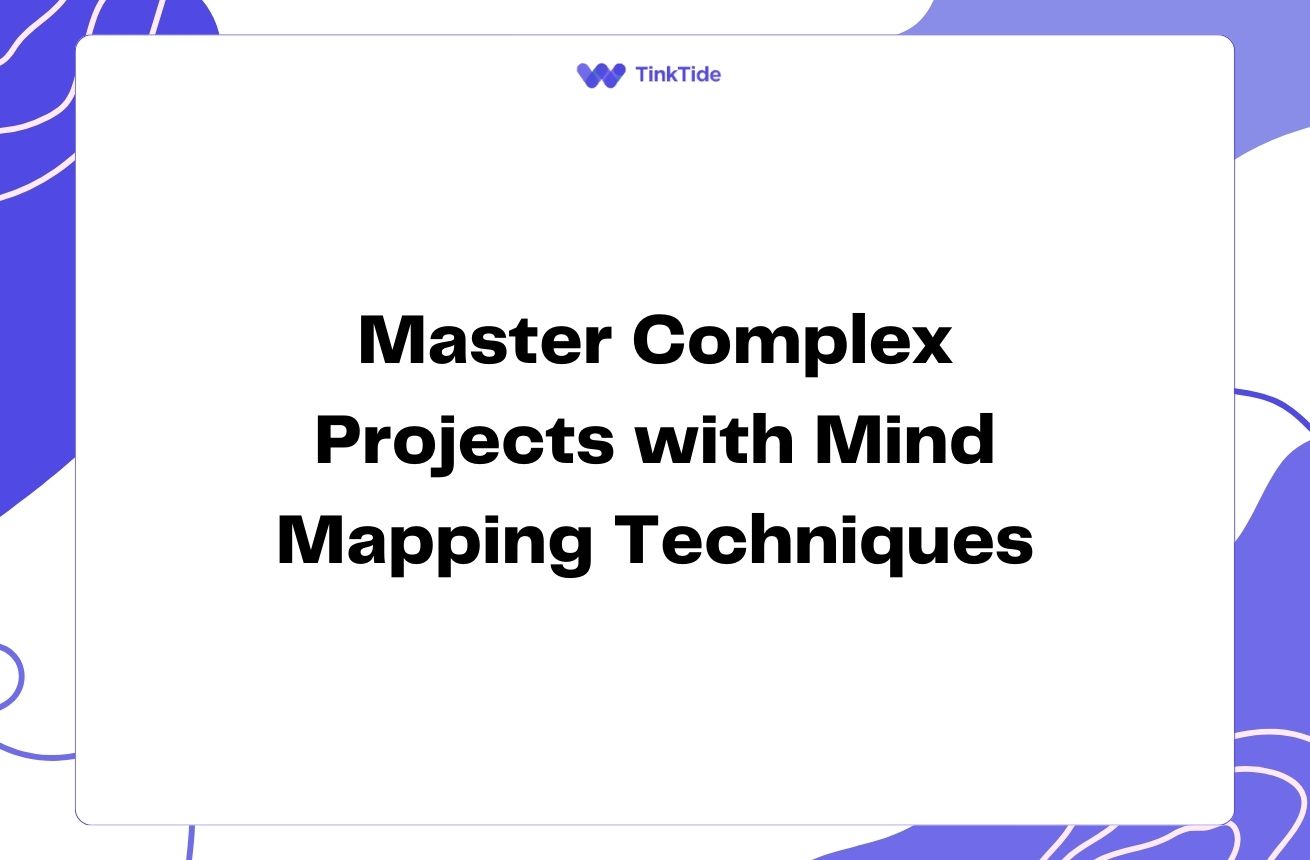Harness Mind Maps for Smarter Decision Making
Understanding Mind Maps for Decision Making
Mind maps are powerful visual tools that can revolutionize your decision-making process. By organizing information in a radial, non-linear manner, mind maps help you see the big picture and uncover connections that might otherwise remain hidden.
When faced with complex decisions, our brains can easily become overwhelmed by the sheer amount of information and options available. Mind maps provide a structured yet flexible way to capture and organize your thoughts, making it easier to analyze alternatives and their potential outcomes.
By using mind maps, you can break down complex problems into manageable chunks, visualize relationships between different factors, and identify patterns that can lead to more informed decisions. This approach engages both the logical and creative sides of your brain, resulting in a more comprehensive decision-making process.
Benefits of Using Mind Maps for Decision Making
Incorporating mind maps into your decision-making toolkit offers several advantages:
- Enhanced clarity: Visualize all aspects of a decision in one place
- Improved organization: Structure thoughts and ideas in a logical manner
- Increased creativity: Encourage free association and new connections
- Better memory retention: Visual format aids in recalling information
- Collaborative decision-making: Easily share and discuss ideas with others
Creating a Decision-Making Mind Map
To create an effective mind map for decision making, follow these steps:
- Step 1: Start with the central issue or decision at the center of your map
- Step 2: Branch out main categories such as options, pros, cons, and consequences
- Step 3: Add sub-branches to explore each category in more detail
- Step 4: Use colors, icons, and images to enhance visual appeal and memory retention
- Step 5: Review and refine your map, adding new connections as they emerge
Remember, the goal is to create a visual representation of your decision-making process that allows you to see all aspects at a glance. This holistic view can lead to more balanced and well-informed decisions.
Applying Mind Maps to Different Decision Types
Mind maps can be applied to various types of decisions, from personal choices to complex business strategies. For example, when making a career change, you might create a mind map with branches for potential industries, required skills, financial considerations, and lifestyle impacts.
In a business context, mind maps can be used for strategic planning, product development, or risk assessment. By visually mapping out all factors involved, teams can collaborate more effectively and make decisions that consider multiple perspectives.
For personal decisions like choosing a vacation destination, a mind map can help you weigh factors such as budget, activities, climate, and travel time. This visual approach makes it easier to compare options and make a choice that aligns with your preferences and constraints.
Tools for Creating Digital Mind Maps
While mind maps can be created with pen and paper, digital tools offer additional features and flexibility. Some popular mind mapping software includes:
- MindMeister: A collaborative online mind mapping tool
- XMind: Offers both free and paid versions with advanced features
- Coggle: A simple, user-friendly option for creating colorful mind maps
- MindMup: Integrates well with Google Drive for easy sharing and collaboration
These tools allow you to easily edit, rearrange, and share your mind maps, making them ideal for both individual and team decision-making processes.
Enhancing Decision Quality with Mind Maps
To maximize the effectiveness of mind maps in decision making, consider these tips:
- Be comprehensive: Include all relevant factors and stakeholders
- Stay objective: Use mind maps to challenge your assumptions and biases
- Prioritize: Use colors or symbols to highlight the most important elements
- Iterate: Revisit and refine your mind map as new information emerges
- Collaborate: Share your mind map with others to gain diverse perspectives
By following these practices, you can leverage mind maps to make more balanced, well-considered decisions that take into account a wide range of factors and potential outcomes.
Address common questions
Here are some frequently asked questions about using mind maps for decision making:
How long should I spend creating a decision-making mind map?
The time spent on a mind map can vary depending on the complexity of the decision. For simple decisions, 15-30 minutes might suffice, while complex decisions may require several sessions. The key is to spend enough time to thoroughly explore all aspects of the decision without getting bogged down in excessive detail.
Can mind maps replace other decision-making tools?
Mind maps are a valuable complement to other decision-making tools rather than a replacement. They work well in conjunction with techniques like SWOT analysis, decision matrices, or cost-benefit analysis. Mind maps can help organize the information gathered from these tools and provide a visual overview of the decision landscape.
How can I use mind maps for group decision-making?
For group decision-making, create a shared mind map that all participants can contribute to. This can be done using collaborative online tools or on a large whiteboard. Encourage team members to add their ideas and perspectives to the map. This approach fosters inclusive decision-making and helps identify areas of consensus and disagreement.
Are there any limitations to using mind maps for decision making?
While mind maps are powerful tools, they may not be suitable for all types of decisions. Highly quantitative decisions might benefit more from spreadsheets or statistical analysis. Additionally, some people may find the non-linear format challenging at first. It's important to use mind maps as part of a broader decision-making toolkit.
How can I ensure my mind map doesn't become too cluttered?
To prevent clutter, start with main branches for key categories and add details as sub-branches. Use clear, concise labels and consider creating separate, linked mind maps for complex sub-topics. Regularly review and prune unnecessary information. Digital tools often allow you to collapse and expand branches, which can help manage complexity.
Additional Resources
The Mind Map Book
A comprehensive guide to mind mapping by Tony Buzan, the inventor of modern mind mapping
Mind Tools: Decision-Making Techniques
A collection of various decision-making techniques, including mind mapping
Harvard Business Review: A Brief History of Decision Making
An overview of decision-making approaches throughout history
TED Talk: The Power of Mind Mapping
A talk by Tony Buzan on the benefits and applications of mind mapping
Coursera: Decision Making in Leadership
An online course exploring various decision-making strategies, including visual tools like mind maps
Embrace Mind Maps for Better Decisions
Mind maps offer a powerful way to visualize, analyze, and improve your decision-making process. By organizing information in a radial, interconnected format, you can gain new insights, consider multiple perspectives, and make more informed choices.
Whether you're facing personal dilemmas or complex business decisions, incorporating mind maps into your decision-making toolkit can lead to more creative, comprehensive, and effective outcomes. The visual nature of mind maps engages both hemispheres of your brain, potentially unlocking solutions that might otherwise remain hidden.
Start experimenting with mind maps in your next decision-making process. You may be surprised at how this simple yet powerful technique can transform your approach to problem-solving and lead to better, more confident decisions.
Elevate Your Decision-Making with Tinktide
Ready to make smarter decisions? Try Tinktide's intuitive mind mapping tools and take your decision-making to the next level.
Start Your Free Trial

